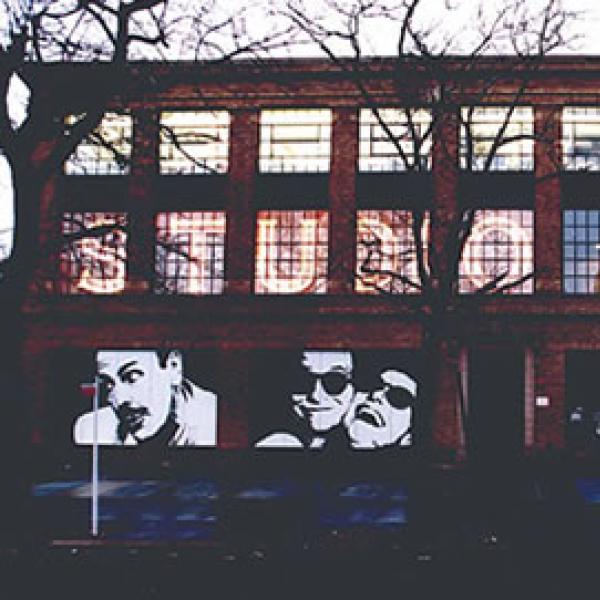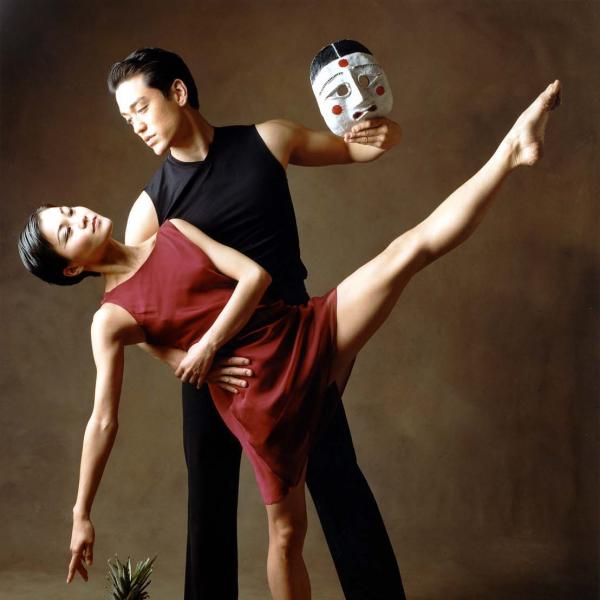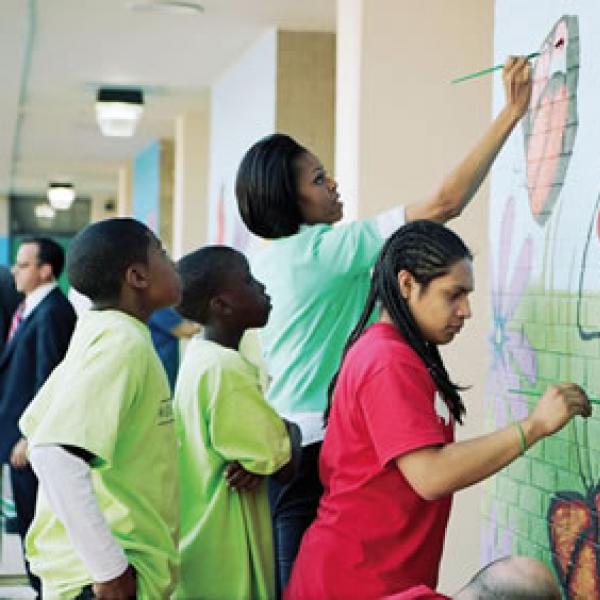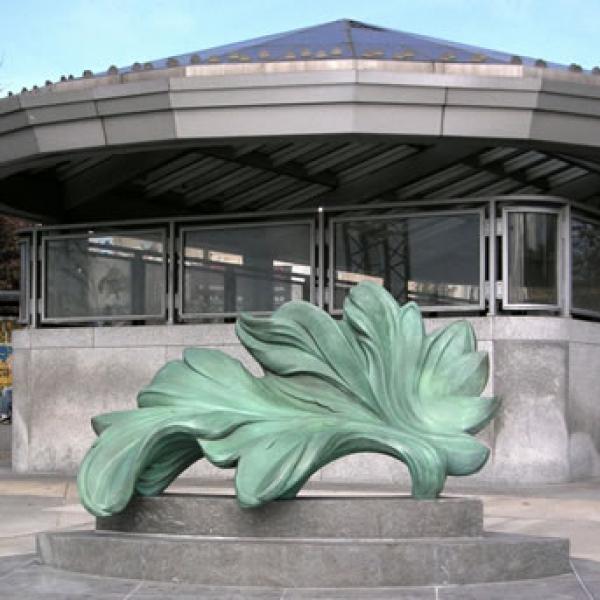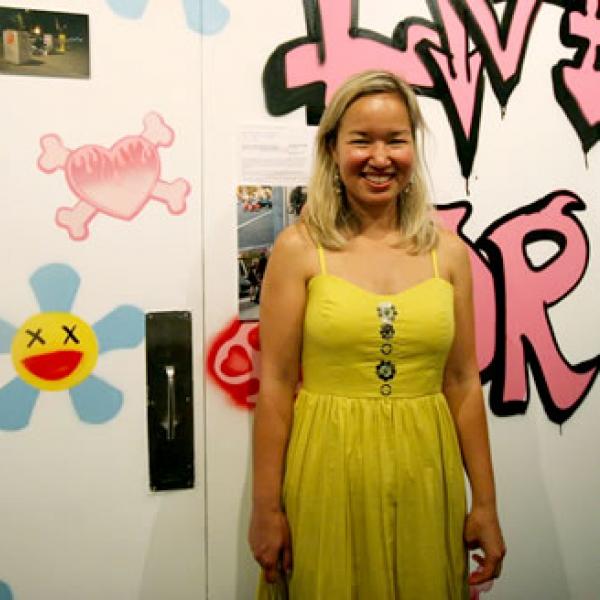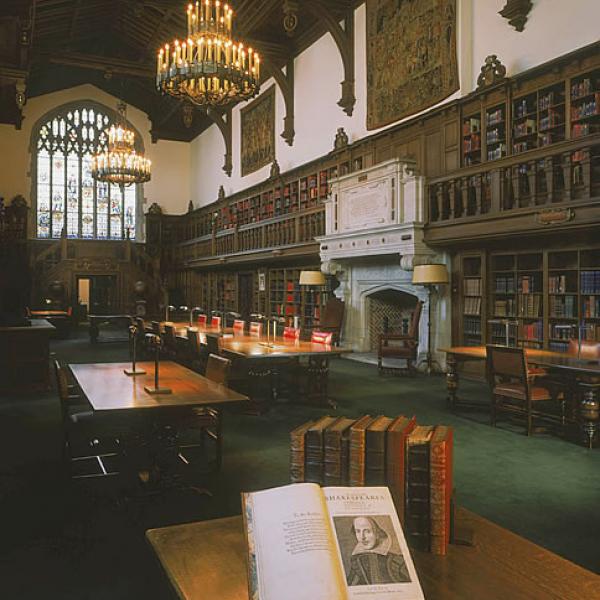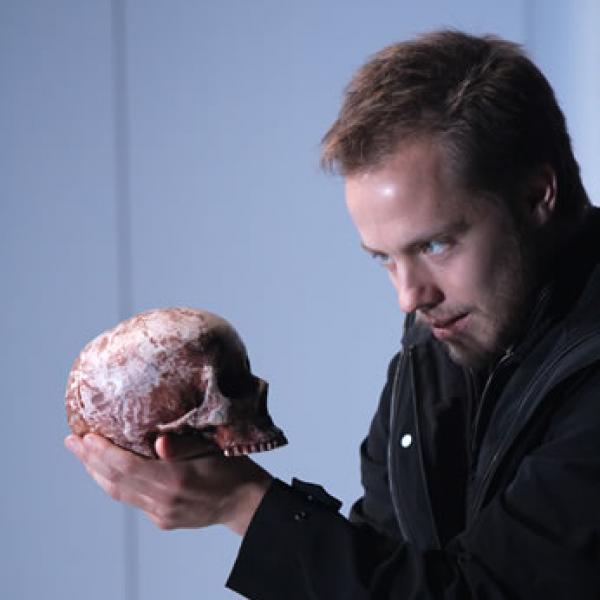A Glimpse of the World
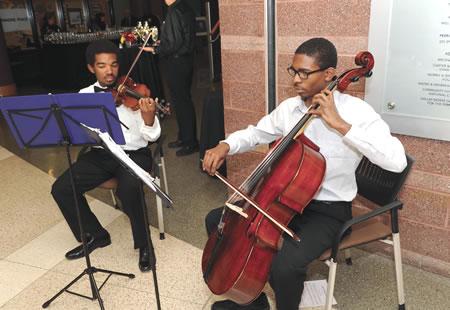
Students from the Levine School of Music at THEARC playing at THEARC's 5th Anniversary Gala reception: (from left) Alexander Myree-Powell and Thomas Smoot. Photo by Victor Holt
Say "DC" and "art" and most people respond, "Smithsonian" or "Kennedy Center." Some of the more knowledgeable might say "Corcoran" or "Shakespeare Theatre." Probably none of them would think of Anacostia, a neighborhood across the Anacostia River in Southeast DC and home to a mostly African-American, lower-income community. Yet Anacostia boasts one of the more interesting and complex arts facilities in the metro area: the Town Hall Education, Arts & Recreation Campus (THEARC). Developed and managed by the not-for-profit Building Bridges Across the River (BBAR), the award-winning mixed-use campus offers a range of services and activities to the Anacostia community.
THEARC had it beginnings in an ambitious mixed-income housing development, the brainchild of Chris Smith and his real estate company. During the planning phase, he and BBAR co-founder Skip McMahon found there was nowhere for the community's children to regularly take after-school arts classes. "It was a real eye-opener for us," McMahon remembered. "When we got involved in the schools and got involved with the kids, we saw that the rehearsals were always 'somewhere else.' The spaces were always moving, and so we lost kids along the way."
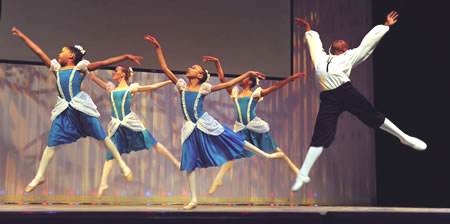
Students and faculty from The Washington School of Ballet at THEARC in performance: (from left) Azaria Rice, Margaret Williamson (teacher), Sydney Wiggins, Aliyah Etheridge, and Jared Kelly. Photo by Victor Holt |
Even before the 110,000-square-foot THEARC campus was constructed, a team led by McMahon -- a DC native -- lined up resident partners who would provide the arts classes, doctor's exams, after-school sports activities, and other services the community lacked. "The need was so tremendous, and we realized we had to take on the challenge of meeting that need if we wanted to help stabilize the community. So our commitment was we would take on fundraising, design, and the location of the property, if [the partners] would provide the services," said McMahon.
There are currently ten resident partners at THEARC, including three not-for-profit arts organizations: the Washington Ballet, the Levine School of Music, and the Corcoran Gallery of Art. These three partners were a natural fit for THEARC, said McMahon, as they were already working in community schools. Also in residence, among others, are a branch of the Boys & Girls Clubs of Greater Washington, Covenant House, and the Washington Middle School for Girls, whose students take their twice-weekly arts electives with the Levine School, the Corcoran, and the Washington Ballet. These resident partners are open on a daily basis, annually providing daytime and after-school services for an average of 65,000 patrons, including more than 2,000 students.
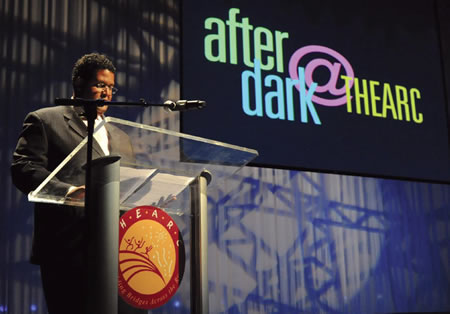
Executive Director Edmund Fleet of Building Bridges Across The River speaking at THEARC 's 5th Anniversary Gala. Photo by Victor Holt |
Additional services -- such as legal advice and employment training are provided by three non-resident partners: The Center for Self-Discovery, the Legal Aid Society of the District of Columbia, and Training Grounds, Inc. While the non-resident partners do not have dedicated spaces at THEARC, their partner status allows them to use the facility free-of charge. There is also a community meeting room at THEARC, a response to the dearth of public meeting spaces in Anacostia. As McMahon noted, "We're a one-stop shop. Parents tell us THEARC is a godsend."
One of the distinguishing features of THEARC is that it not only provides the opportunity for high-quality arts experiences, it provides high-quality spaces in which those experiences can take place. A tour with current BBAR Executive Director Edmund Fleet reveals the careful planning that has gone into creating each resident's partner's dedicated facilities. For example, the Washington Ballet, which offers classes for youth and seniors in ballet and modern dance styles as well as Pilates, features not one but two light-filled studios that look out onto Mississippi Avenue. Fleet noted, "We put the arts partners on the exterior of THEARC to give the community a glimpse of a world they don't normally see."
Over at the Levine School of Music area, the rooms are soundproofed and feature Steinway and Suzuki instruments. A recital hall provides space for student concerts as well as master classes by resident and visiting artists, such as award-winning pianist Young-Hyun Cho, Ysaye Barnwell of Sweet Honey in the Rock, and members of the National Symphony Orchestra. There is also an art gallery on the first floor, managed by the Corcoran, which presents shows by local artists as well as juried shows of student work from the on-site Corcoran Art Reach program.
The centerpiece of THEARC is a 365-seat, state-of-the-art theater. The stage is an exact replica of the Washington Ballet's home space -- the Eisenhower Theater -- which means it serves the needs of the ballet's annual Nutcracker performance as easily as it serves as a concert or recital hall or live theater space. And as Fleet reveals during the backstage tour, it has also hosted numerous community events, including a DC Urban Agenda stump speech by then-candidate Barack Obama.
In addition to the professionally sized stage, the space's amenities include four sets of dressing rooms, a hydraulic orchestra pit, storage for a Steinway piano, a scene shop, and two catwalks that, according to Fleet, "were purposely built so that we could teach lighting to young people." In fact, both the Shakespeare Theatre and Arena Stage regularly send their interns to train at THEARC. Said Fleet, "Before THEARC, those groups wouldn't have come across the river."
THEARC also sponsors its own pre-professional theater training program each summer, offering hands-on workshops in lighting, sound, and pre-production. The ultimate goal, according to Fleet, is "so young people can learn a trade. There are so many opportunities in theater arts, and also in working in sound and lights at hotels and other venues."
Somewhat surprisingly, THEARC doesn't have a resident theater company. The omission is purposeful. As Fleet explained, not having a theater company in residence means that more organizations and community members have access to the theater space, which is a rarity across the river. "We're booked with four to eight events every month. Last year we hosted more than 330 events---community and arts events as well as events by our partner organizations. We have become very busy because of our affordability."
"There are 33 movie theaters on Wisconsin Avenue [in Northwest Washington, DC] but not one single theater east of the Anacostia River," added McMahon. "That's why our theater also has a movie screen."
A primary goal of THEARC's fundraising is to be able to keep use of the theater space 50 percent subsidized, so that a range of groups -- not just THEARC partners -- can benefit from the space. In fact, BBAR's fundraising mission is driven by a desire to continue to subsidize the many costs associated with running a building of THEARC's size so the facility can continue to operate at little or no charge to the resident agencies and remain affordable for whoever would like to use it. For example, BBAR applied for and received a FY 2010 NEA Challenge America grant to support its marketing plan, which can be a costly part of any organization's budget.
Fleet noted that one of his favorite events in the theater is the annual Nutcracker. "I enjoy when Washington Ballet premieres the Nutcracker because their Southeast, Northwest, and Virginia campuses come together. These are groups that wouldn't come together otherwise." According to Fleet, this diversity has come to be reflected in the housing that has been developed around the campus. "One of the things I love about THEARC and the surrounding neighborhood is the diversity of race, socio-economic status, and education. There is housing that runs the gamut from Section 8 to the low $400,000s."
Residents of Anacostia and other parts of DC are not the only ones flocking to THEARC. As McMahon remarked, the staff regularly plays host to an array of national and international visitors who are looking to replicate the THEARC model in their own communities.
First and foremost, visitors are told, a successful project needs a champion. "One thing that was key was Chris Smith," said McMahon. "The William C. Smith Company really stood behind THEARC from the beginning. It took 15 years to get this project from idea to reality. Chris's credibility in city government, the funding world, and the business community was a really important ingredient to keep us going and focused. It's not enough to have a solid idea, you also have to have the clout to carry it forward."
McMahon added that another key to THEARC's success is that the campus really serves a need in the community. "If you have a demonstrable need, that helps you attract money. People will invest when there's an understandable need."
Ultimately McMahon said THEARC is a success because it has changed the perspective on the community it serves. "We've really raised expectations of what to expect from nonprofits in this community. You wouldn't expect to see this state-of-the-art campus in a low-income neighborhood. This community, just like any other community in Washington, DC, should receive the best of services. They shouldn't be treated differently because of the economic situation."


